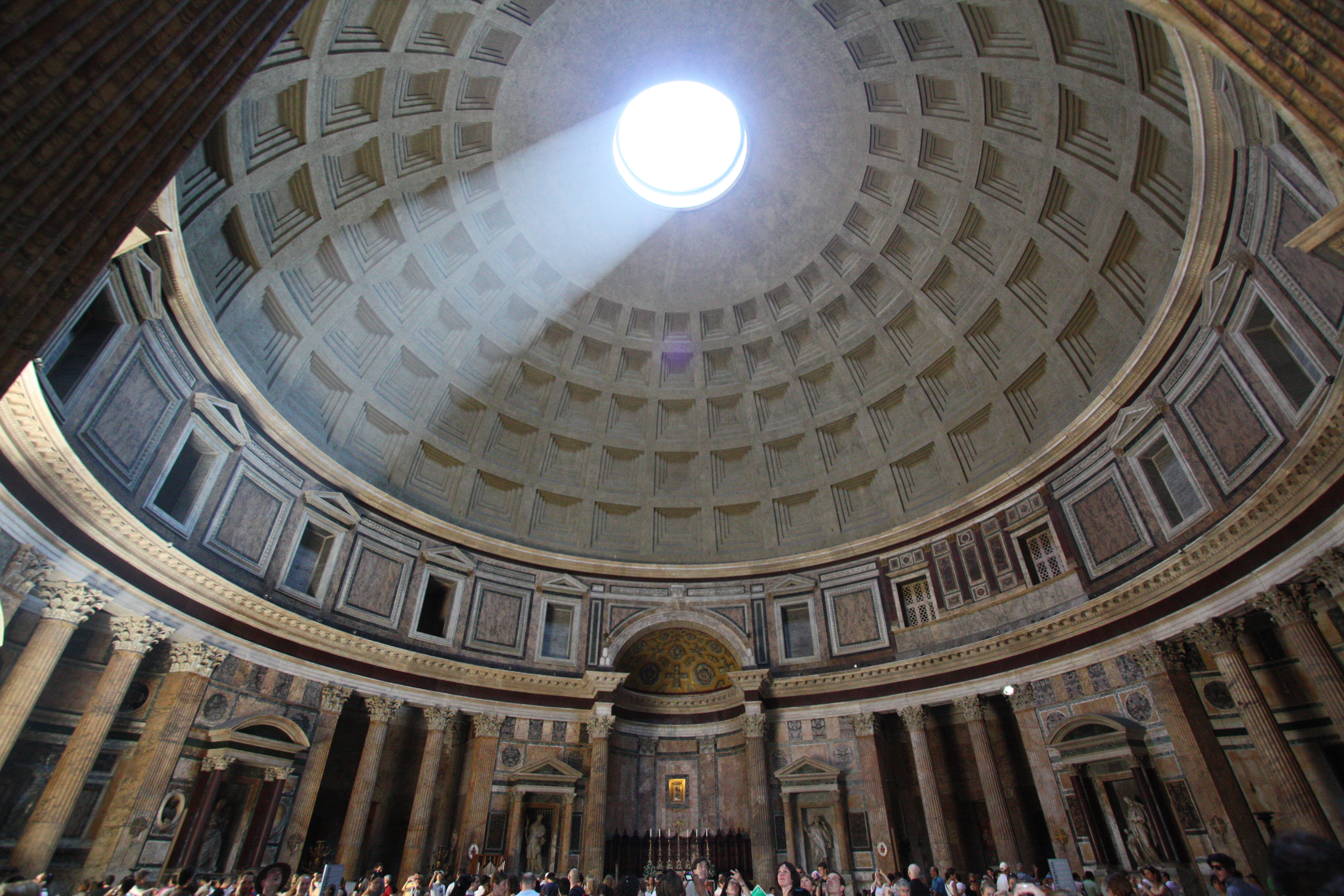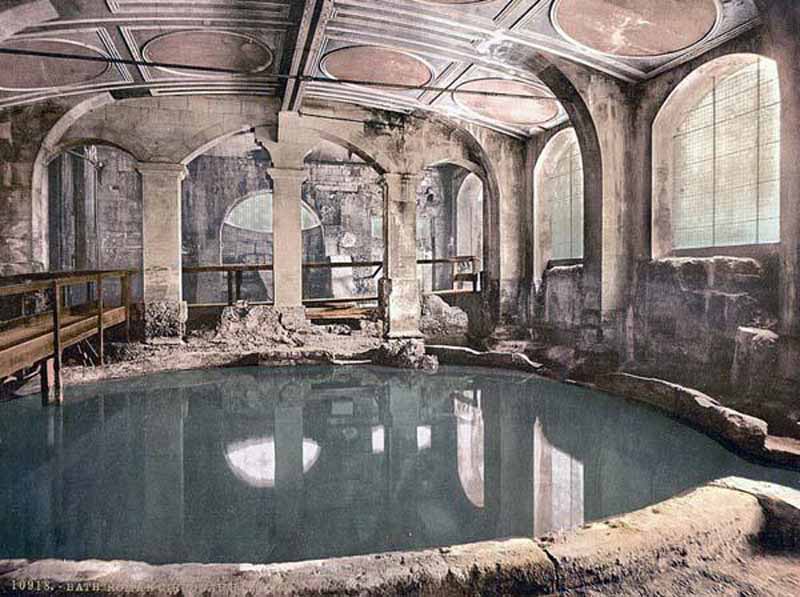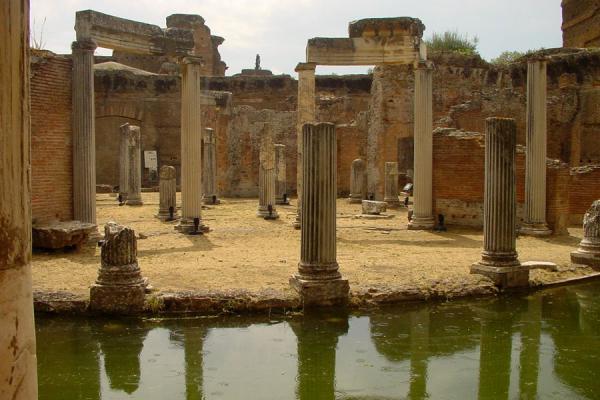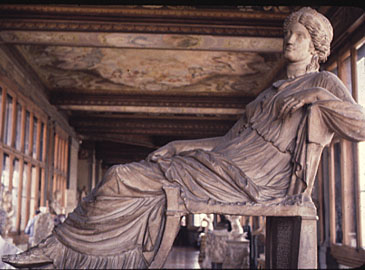The Romans are most well known for the construction of magnificent buildings, such as the Colosseum above. The Romans discovered and began using the arch in architecture. Along with the arch came other opportunities for design, the barrel vault and dome. A barrel vault is an arch that is projected three-dimensionally. A dome is an arch that has been rotated around a single point.
 |
| Dome at the Pantheon in Rome |
 |
Barrel Vault at the Basilica Nova, built in 312 A.D.
|
An aspect that Rome is not as well known for is the invention of concrete. Concrete has been used as a major building material since that time and many architects are very thankful for that invention. Romans were also well known for their public bath houses. "Bathing was one of the most common daily activities in Roman culture, and was practiced across a wide variety of social classes. Though many contemporary cultures see bathing as a very private activity conducted in the home, bathing in Rome was a communal activity. While the extremely wealthy could afford bathing facilities in their homes, bathing most commonly occurred in public facilities called thermae. In some ways, these resembled modern-day spas. The Romans raised bathing to a high art as they socialized in these communal baths. Courtship was conducted, as well as sealing business deals, as they built lavish baths on natural hot springs." (wikipedia)
 |
| Baths of Trajan |
 |
| Roman baths at Villa Adriana, in Rome |
Romans used much of the same type of furniture as the Greeks, including the klismos chair. However, they did have their own furniture inventions as well. The "cathedra" which was made a more heavy structure based on the basic design of the Greek klismos. They also developed the "sella" a type of stool, and they developed the first type of "fainting couch" a "lectus", which doubled as a couch for setting with guests and a bed at night.
Current Applications of Roman design:
 |
| Arches used as decorative interior in a current day home |
 |
| Arches in a modern bathroom |
 |
| A dome shaped home |
 |
| The St. Louis Arch |











No comments:
Post a Comment